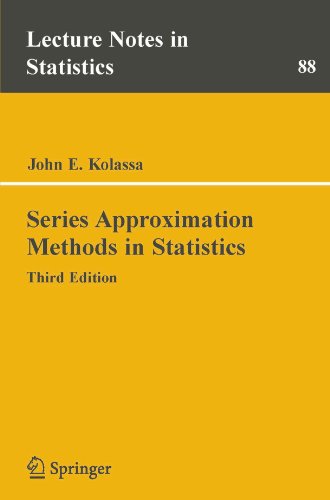

Most ebook files are in PDF format, so you can easily read them using various software such as Foxit Reader or directly on the Google Chrome browser.
Some ebook files are released by publishers in other formats such as .awz, .mobi, .epub, .fb2, etc. You may need to install specific software to read these formats on mobile/PC, such as Calibre.
Please read the tutorial at this link: https://ebookbell.com/faq
We offer FREE conversion to the popular formats you request; however, this may take some time. Therefore, right after payment, please email us, and we will try to provide the service as quickly as possible.
For some exceptional file formats or broken links (if any), please refrain from opening any disputes. Instead, email us first, and we will try to assist within a maximum of 6 hours.
EbookBell Team

0.0
0 reviews
ISBN 10: 0387314091
ISBN 13: 978-0387314099
Author: John Kolassa
This book was originally compiled for a course I taught at the University of Rochester in the fall of 1991, and is intended to give advanced graduate students in statistics an introduction to Edgeworth and saddlepoint approximations, and related techniques. Many other authors have also written monographs on this s- ject, and so this work is narrowly focused on two areas not recently discussed in theoretical text books. These areas are, ?rst, a rigorous consideration of Edgeworth and saddlepoint expansion limit theorems, and second, a survey of the more recent developments in the ?eld. In presenting expansion limit theorems I have drawn heavily on notation of McCullagh (1987) and on the theorems presented by Feller (1971) on Edgeworth expansions. For saddlepoint notation and results I relied most heavily on the many papers of Daniels, and a review paper by Reid (1988). Throughout this book I have tried to maintain consistent notation and to present theorems in such a way as to make a few theoretical results useful in as many contexts as possible. This was not only in order to present as many results with as few proofs as possible, but more importantly to show the interconnections between the various facets of asymptotic theory. Special attention is paid to regularity conditions. The reasons they are needed and the parts they play in the proofs are both highlighted.
Chapter1 : Introduction
Chapter 2: Content
Chapter 3: Conclusion
Chapter 4: Appendices
Chapter 5: Glossary
Chapter 6: References
Chapter 7: Index
what is approximation in statistics
what is series in statistics
use of time series in statistics
approximation method statistics
series approximation of integrals
Tags: John Kolassa, Series approximation, methods in statistics